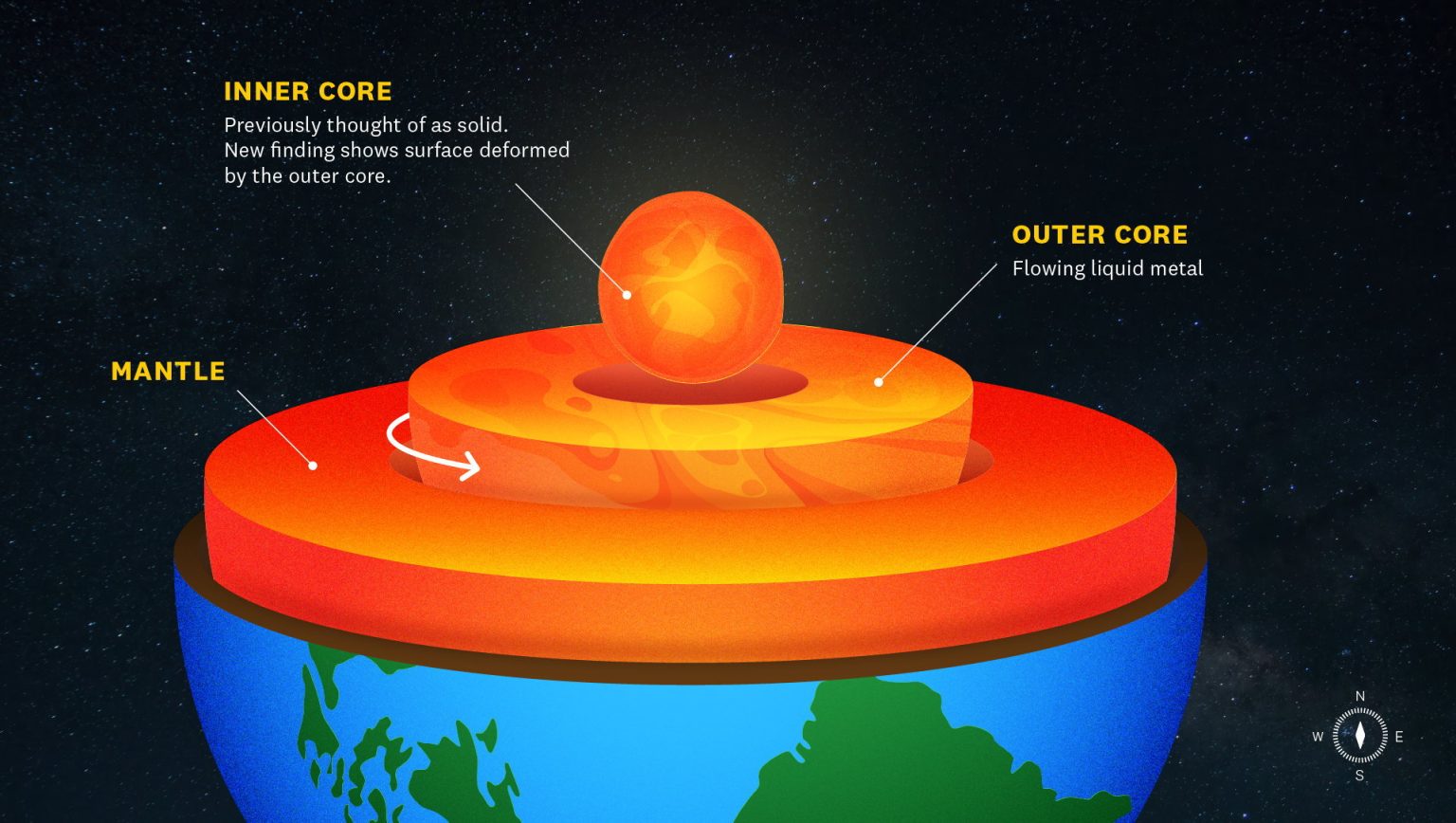SWSCcore – by Stephen Beech
ONLINE EMBARGO 16.00 GMT, 10/02/25
Earth’s inner core is less solid than previously thought, reveals new research.
American scientists have detected structural changes near the planet’s centre.
Changes to the inner core has long been a topic of debate for scientists, but most research has been focused on assessing rotation.
Study principal investigator Professor John Vidale, of the University of Southern California Dornsife College of Letters, Arts and Sciences, explained that the team “didn’t set out to define the physical nature of the inner core.”
He said: “What we ended up discovering is evidence that the near surface of Earth’s inner core undergoes structural change.”
Prof Vidale says the findings, published in the journal Nature Geoscience, shed new light on the role topographical activity plays in rotational changes in the inner core that have “minutely” altered the length of a day – and may relate to the ongoing slowing of the inner core.
Located 3,000 miles below the Earth’s surface, the inner core is anchored by gravity within the molten liquid outer core.
Until now the inner core was widely thought of as a solid sphere.
The original aim of the research team was to further chart the slowing of the inner core.
Prof Vidale said: “As I was analysing multiple decades’ worth of seismograms, one dataset of seismic waves curiously stood out from the rest.
“Later on, I’d realise I was staring at evidence the inner core is not solid.”
The study used seismic waveform data – including 121 repeating earthquakes from 42 locations near Antarctica’s South Sandwich Islands that occurred between 1991 and 2024 – to give a glimpse of what takes place in the inner core.
As the research team analysed the waveforms from receiver-array stations located near Fairbanks, Alaska, and Yellowknife, Canada, one dataset of seismic waves from Yellowknife included “uncharacteristic” properties the team had never seen before.
Prof Vidale said: “At first the dataset confounded me.”
It wasn’t until the research team improved the resolution technique that it become clear the seismic waveforms represented additional physical activity of the inner core.
Prof Vidale says the physical activity is best explained as temporal changes in the shape of the inner core.
He said: “The new study indicates that the near surface of the inner core may undergo viscous deformation, changing its shape and shifting at the inner core’s shallow boundary.”
Prof Vidale believes the clearest cause of the structural change is interaction between the inner and outer core.
He added: “The molten outer core is widely known to be turbulent, but its turbulence had not been observed to disrupt its neighbour the inner core on a human timescale.
“What we’re observing in this study for the first time is likely the outer core disturbing the inner core.”
Prof Vidale says the discovery opens a door to reveal previously hidden dynamics deep within Earth’s core, and may lead to better understanding of Earth’s thermal and magnetic field.
ENDS




